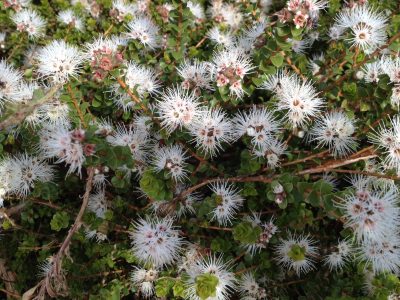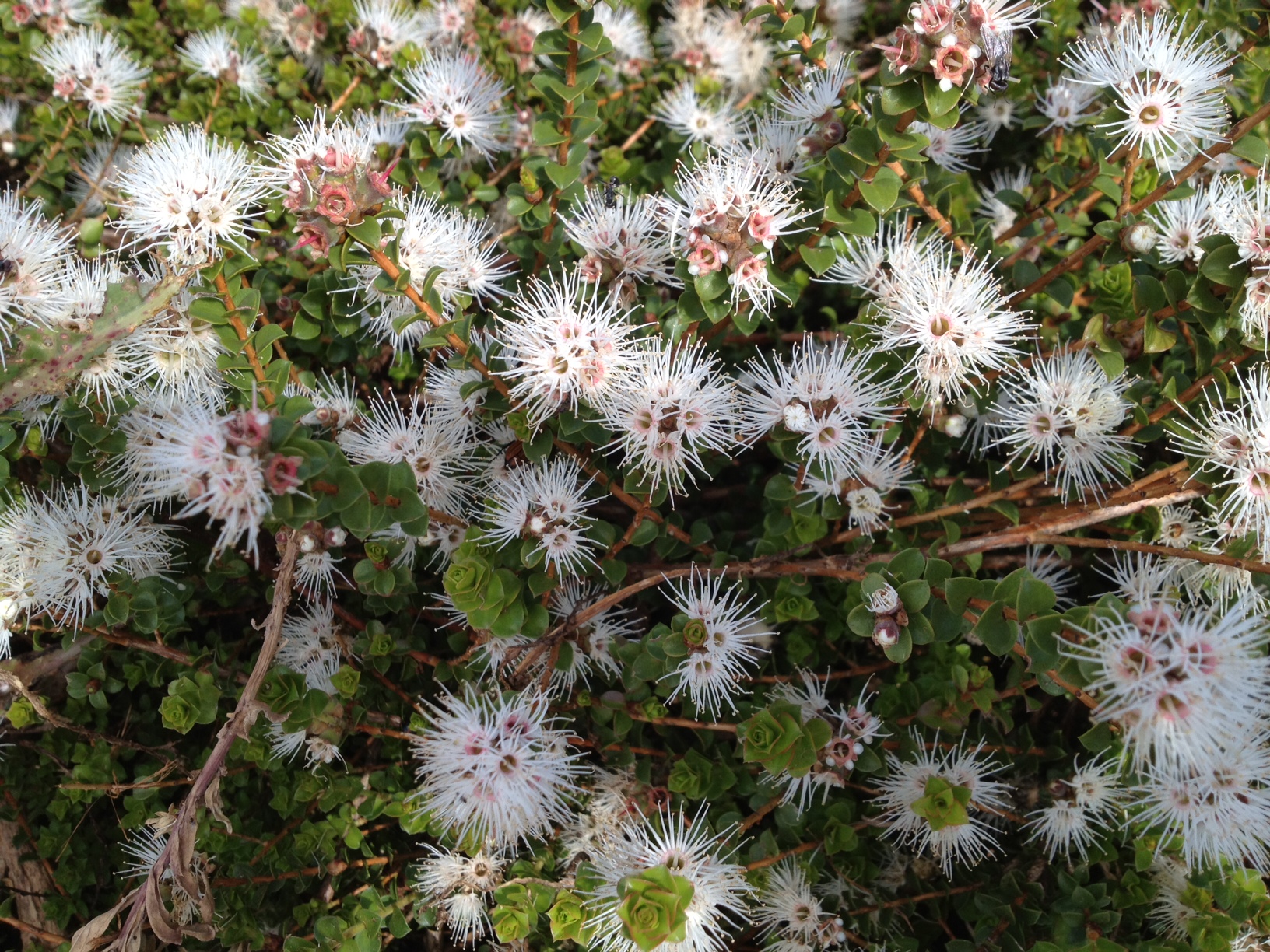
These white fluffy flowers become sweet edible native berries.
From the most beautiful and prolific flowering ground cover comes the most delicious little native berries. These beautiful little red/green berries grown along the southern coast of Victoria and in South Australia. They are a sweet berry, approx 1 cm in size, that taste something like a spicy apple, making it the perfect choice for sweet pastries and deserts.
Muntries grow naturally as a ground cover, but due to their ever increasing popularity as a bush berry to eat they are trellised to make harvest a lot easier on the back!
The berries are still wild-harvested, but commercial cultivation has grown and will no doubt continue to grow as this beautiful little berry becomes better known.
Early Use of Muntries
Muntries played an important role in the diet of the Ngarrindjeri people who used the sweet berries to trade with neighbouring tribes. The fruits would be eaten whole or pounded into pulp and left on rocks to dry in the sun, which preserved out of season.
Muntries are also known by the names of Munthari, Munta, Mantirri and Mantari and muntries are also known as munterberries.
The early pioneering women would make jams, chutneys and preserves with them as well as cakes and deserts.
How to Use Muntries
Due to their sweet tastes Muntries can easily be eaten fresh, so many of their bush fruit cousins are quiet sour, this sweetness makes them a perfect addition in desserts and salads. OutbackChef sells Muntries year round in frozen form, we get them directly from the grower at harvest.
Muntries are high in antioxidants and Vitamin C.
Recipes with Muntries
Sprinkle on top of any green salad with dressing for a touch of sweetness.
Add with other berries on top of your favourite pavlova recipe
Add into pies, tarts, chutneys or jams….these little bushfood berries are worth their weight in gold!
How to Grow Muntries
The little plants like a neutral to alkaline sandy soil plus good drainage. In the wild plants can be found growing in broken limestone soils. They grow in full sun, but when the plant is establishing itself some shade is beneficial.
While muntries grow naturally as ground cover, they can also be trellised, which is common for commercial production. Muntries make great backyard plants and grown over rocks and walls. Their beautiful white, fluffly flowers are in absolute abundance which lead onto a great harvest, usually from February to early April.
Nutritional Information per 100g
|









Leave A Comment
You must be logged in to post a comment.